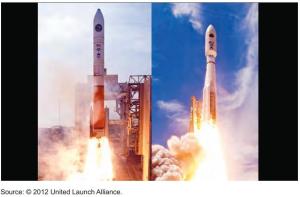GAO's Acquisition and Sourcing Management Team
- Acquisition
- Major Defense and Security Systems: The Department of Defense’s (DOD) acquisition of major weapon systems is on our High Risk List, and this 2013 testimony showed how Congress and DOD continually explore ways to improve acquisition outcomes. We also reported on major systems acquisitions at the Department of Homeland Security.
- DOD Space Systems: A testimony from earlier this year assessed potential effects of future changes in DOD’s acquisition of space-based capabilities.
- National Aeronautics and Space Administration (NASA): This is one of our annual assessments of NASA’s projects, such as space transportation vehicles or satellites with advanced sensors for studying space and earth.
- Best Practices: Since the 1990s, we have worked extensively on developing acquisition process best practices for government agencies, drawing from successful private sector firms.
- Sourcing
- Acquisition Planning and Management: This report assessed competition in DOD’s contracts for goods and services.
- Strategic Sourcing: We identified practices at the leading edge in the private sector for buying strategically and explore what factors help or hurt the government’s strategic sourcing.
- Agency Acquisition Capacity: DOD, the intelligence community, and other agencies turn to contractors for their acquisitions, often without the necessary oversight.
- Acquiring and Protecting Critical Technologies: We have reviewed the effectiveness of government programs established to identify and protect technologies critical to U.S. interests, including export controls and non-export control programs.
 Gerald R. Ford Class Nuclear Aircraft Carrier[/caption]
[caption id="attachment_1695" align="aligncenter" width="300" class=" "]
Gerald R. Ford Class Nuclear Aircraft Carrier[/caption]
[caption id="attachment_1695" align="aligncenter" width="300" class=" "] Evolved Expendable Launch Vehicle[/caption]
[caption id="attachment_1696" align="aligncenter" width="300" class=" "]
Evolved Expendable Launch Vehicle[/caption]
[caption id="attachment_1696" align="aligncenter" width="300" class=" "] F-35 Lightning II Program[/caption]
F-35 Lightning II Program[/caption]
Images excerpted from GAO-14-340SP
Our 2014 assessment found the overall size of DOD’s large programs decreased, but the estimated cost increased by $14.1 billion. Additionally, we found that most of the programs we reviewed weren’t fully following a knowledge-based acquisition approach. This could carry risk into other phases of the acquisition, possibly resulting in increased costs and schedule delays.
Excerpted from GAO-14-340SP
Listen to this podcast with Michael Sullivan, a director in ASM, for more information on the 2014 Quick Look:- Questions on the content of this post? Contact Paul Francis at francisp@gao.gov.
- Comments on the WatchBlog? Contact blog@gao.gov.

GAO's mission is to provide Congress with fact-based, nonpartisan information that can help improve federal government performance and ensure accountability for the benefit of the American people. GAO launched its WatchBlog in January, 2014, as part of its continuing effort to reach its audiences—Congress and the American people—where they are currently looking for information.
The blog format allows GAO to provide a little more context about its work than it can offer on its other social media platforms. Posts will tie GAO work to current events and the news; show how GAO’s work is affecting agencies or legislation; highlight reports, testimonies, and issue areas where GAO does work; and provide information about GAO itself, among other things.
Please send any feedback on GAO's WatchBlog to blog@gao.gov.
